Hopi, Mountain Roads, and the World’s Oldest Rodeo
First off, those of you who read my blog for the fishing report are probably wondering where it went. It will be back in a couple weeks! Susan doesn’t fish and when we vacation fishing isn’t something I do very much. Thank you for your patience!
Once we left Zion NP the road was interesting for us (as easterners) but not spectacular. We got to Tuba City and asked for directions to the Hopi Cultural Center. “That’s at Second Mesa,” I was told.
“How do I get there?”
The lady pulled out a map and showed me. “How for is that?!” I thought it was there in Tuba City. “About an hour and a half,” she said.
It was an hour and a half of desolate road. I don’t want to or mean to insult the Hopi but when we got there I was reminded of many of my third world experiences. “I hope this isn’t a train wreck,” I said as we got into our room.
Without exception, every Hopi and Navajo we met was extremely polite and gracious. I wish I could be so.
The Hopi live in a collection of small villages perched atop three mesas.They live a difficult life, one foot in their past, one foot in the present. I think most of them find it a difficult juggle. I would have liked to photograph some of them, some of their homes, but all the villages prohibit photography.
The abandoned pueblos of the Anasazi are well-known. Some of the Hopi live in similar dwellings, atop the mesa, at the edge of high cliffs, and have been doing so for close to 1000 years. One of their villages is the oldest, longest continually occupied settlement in North America.
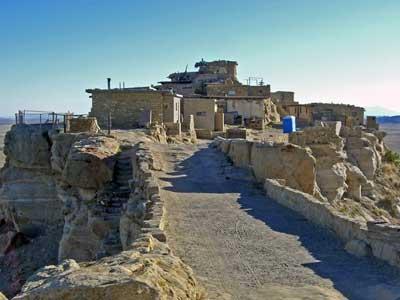
Walpi village on First Mesa, continually inhabited for 800 or 900 years. Photo downloaded from the internet.
We hired a guide, who took us to all the villages and to see the Katsina dance that was going on. The Hopi are all farmers. They live in a very dry area and do not have water for irrigation. If it doesn’t rain they suffer severe hardship. The Katsina dance is one of their many religious ceremonies in which they pray for rain.
There were about two hundred men in fantastic, elaborate, beautiful Katsina costumes, dancing in unison to drums and shakers under the hot desert sun, in temperatures in excess of 100 degrees. I found it deeply moving and would have liked to see more. The Hopi don’t like outsiders at their religious ceremonies though, and our guide thought it best that we leave.
The Hopi make beautiful silver jewelry, baskets, pottery, and carved Katsina dolls. All Hopi art has religious significance. Susan bought earrings, a couple of dolls, and a small pot, all directly from the artists, who talked freely about their work, how they make it, what its significance is.
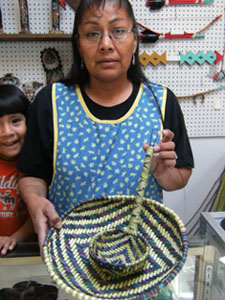
We met Iva and watched her weave beautiful baskets using yucca leaves.
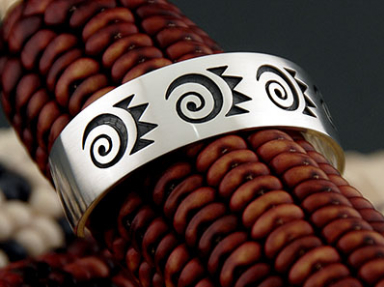
An example of Hopi silver work.
Far from being a train wreck, our time with the Hopi was richly rewarding.
Pray for rain for the Hopi. They need it desperately.
We left the Hopi and drove back to Tuba City, through Cameron (the trading post is not worth the stop- it reminded me of South of the Border), and through the traffic of Flagstaff (culture shock after two days among the austere Hopi). Then we took Arizona Route 89A to Sedona.
What a scary road.
It loses 2000 feet in a couple miles, hairpin turns the entire way. Nets draped over the cliffs above the road are supposed to hold the rocks in place so they don’t crush your car. At least there are guard rails.
From Sedona we continued on 89A through Jerome.
What a scary road.
It gains 2000 feet in a couple miles, hairpin turns the entire way. Nets draped over the cliffs above the road are supposed to hold the rocks in place. At least there are guard rails.
After Jerome the road settles down and takes you into Prescott. It’s Rodeo Week here!
We visited the Phippen Museum of Western Art. They have a collection of guns and tack from the wild west days, native artifacts, sculpture, paintings of all kinds, and a fabulous exhibit of rodeo photographs by the late Louise Serpa. Her photos capture the danger and excitement of the rodeo quite remarkably. You can visit her website and see some of her work here…
We also visited the Smoki Museum. This museum has a large collection of native American artifacts and also documents the secret society of the Smoki Dancers, to which Barry Goldwater belonged. it’s an unusual story which even wikipedia hasn’t heard about. You’ll have to visit the museum.
The last thing we did in Prescott was to (hint- it’s rodeo week) go to the rodeo! Prescott has the World’s Oldest Rodeo, which runs for a week. The town fills up with tourists and rodeo fans, there are concerts, parades, fireworks, and more, Independence Day is the same week, and it’s quite the lively scene.
Tragically, nineteen local firefighters lost their lives just as the festivities were kicking off. Needless to say that subdued the mood. There were all kinds of memorials and fundraisers going on the help the families of the deceased. Prayers will help, too.
At the rodeo the first thing that caught my eye at the rodeo were the cowgirls. They were looking mighty fine with their cowboy hats, cowboy boots, long legs, and daisy dukes.
Then the official entertainment started.
It had rained heavily earlier in the day and the arena was full of mud. The cow roping and saddle races had cowboys running, rolling around and being dragged through it. The bronco and bull riding were my favorites, although not a single rider qualified on the bulls. At least no one got hurt.
Coming up next- Route 66 and the Grand Canyon!
Life is great and I love my work!
Life is short. Go Adventuring!
John Kumiski
http://www.spottedtail.com
All content in this blog, including writing and photos, copyright John Kumiski 2013. All rights are reserved.
|
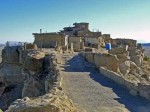
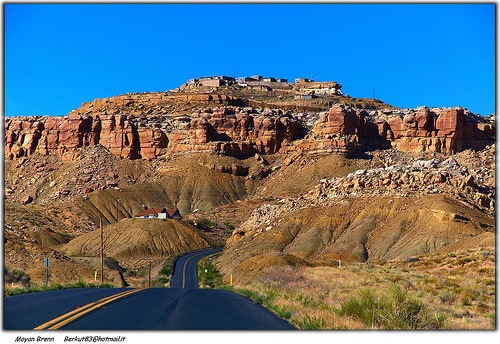
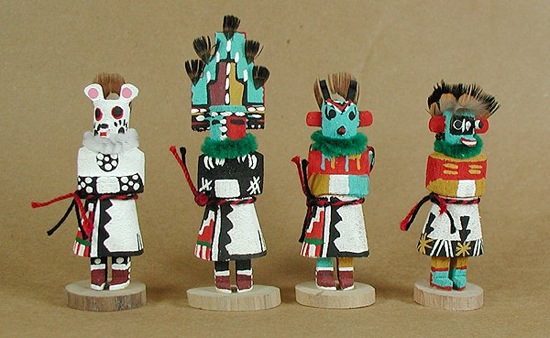
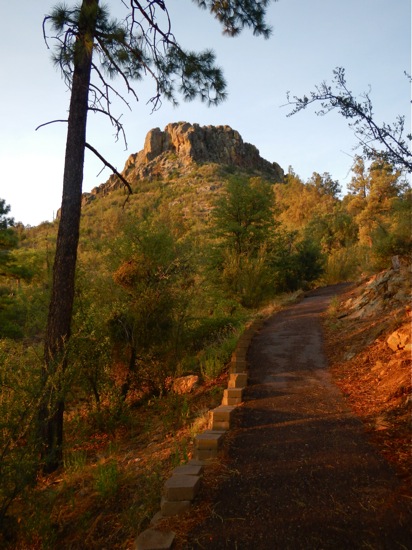
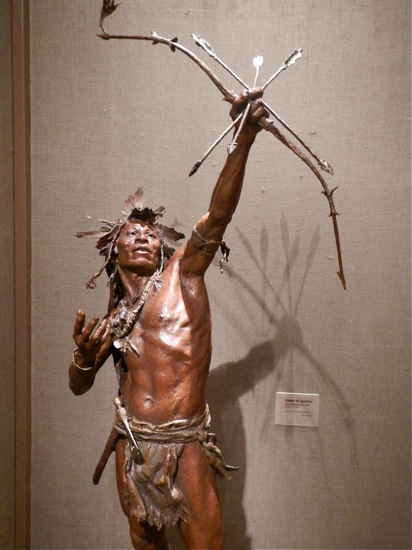
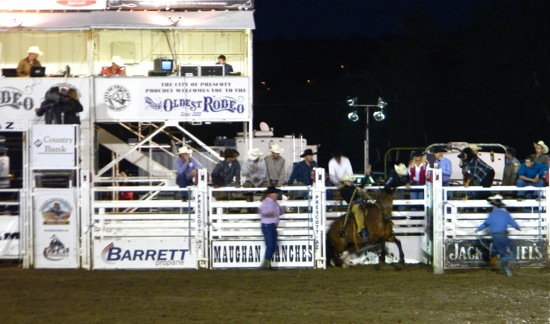
Recent Comments